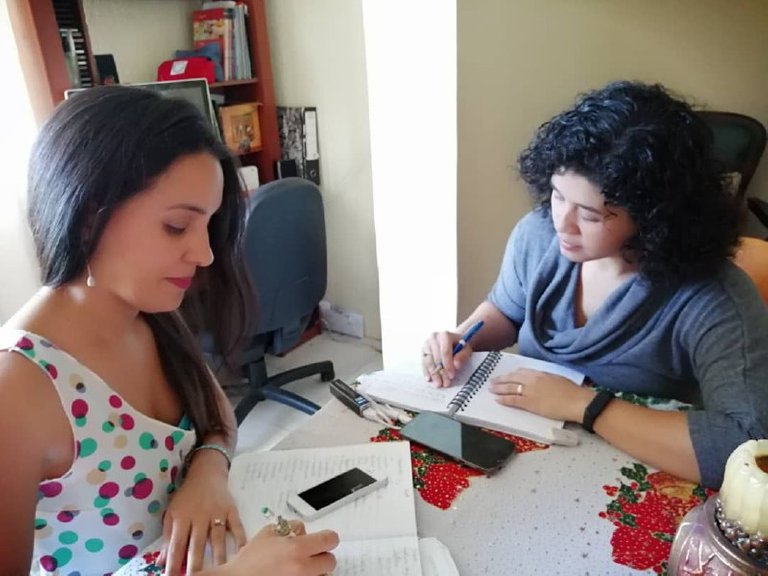¿Te has encontrado alguna vez en una encrucijada tomando una decisión de la que dependerá gran parte de tu futuro inmediato?
Como dueños de nuestros negocios afrontamos situaciones que nos hacen cuestionar si lo que estamos a punto de hacer es lo correcto o no, es por eso que queremos presentarte la técnica del ¿What If? / ¿Qué pasaría si?
Esta técnica es empleada en la Gestión de Riesgos, donde se pueden identificar las posibles consecuencias de materializarse un riesgo, lo que permitirá desarrollar planes de protección para minimizar su impacto. Sin embargo, para efectos de las tomas de decisiones, se puede emplear, logrando así conocer las consecuencias de realizar una determinada acción.

Acá te dejaremos los pasos:
Identifica el escenario que deseas evaluar:
Reconocer que estamos ante una situación que nos genera incertidumbre, muchas veces no es fácil, pero es el punto de partida a la hora de tomar una decisión.
Debes tener en claro cuál es ese problema para que esta técnica tenga el mejor sentido y tengas el resultado que esperas con mayor claridad.
Realiza la pregunta ¿Qué pasaría si? en un primer nivel:
Una vez identificada la situación comienza a preguntar ¿Qué pasaría si...? esto te va a dar una respuesta inicial a ese escenario.
Continúa preguntando ¿Qué pasaría si?
La respuesta obtenida en la pregunta anterior es el insumo para la pregunta siguiente, debes repetir este proceso hasta 5 veces, lo que te permitirá ver un escenario más amplio para tomar una decisión u otra.
Acá te dejamos un ejemplo:
Problema:
¿Volver a un empleo o seguir con el emprendimiento? Una pregunta que muchos nos hemos hecho en los tiempos actuales, y que nos ha hecho detenernos un segundo a evaluar diferentes escenarios.
Aplicar la técnica:
¿Qué pasaría si vuelvo a un empleo tradicional con horario de oficina?
Tendré menos tiempo para mis hijos.
¿Qué pasaría si tengo menos tiempo para mis hijos?
Debo buscar a alguien que me ayude con sus actividades en casa y de escuela.
¿Qué pasaría si debo buscar un tercero para que me ayude con las actividades de los niños?
Será un gasto extra en casa.
¿Qué pasaría si tengo un gasto extra en casa?
Tendría que destinar una parte del salario para ello.
¿Qué pasaría si tengo que destinar una parte del salario?
Debo garantizar que el pago por el empleo sea lo suficiente para soportar gastos fijos.
Ahora bien, puedes realizar el mismo ejercicio con la segunda opción, lo que te va a permitir un panorama mas amplio:
Aplicar la técnica:
¿Qué pasaría si sigo con mi emprendimiento?
Podré manejar mi tiempo con mayor flexibilidad.
¿Qué pasaría si puedo manejar mi tiempo con mayor flexibilidad?
Puedo dedicar el tiempo necesario a las actividades escolares y de crianza de los niños.
¿Qué pasaría si puedo dedicar el tiempo necesario a las actividades de los niños?
Me ahorro el gasto de que un tercero realice esas tareas.
¿Qué pasaría si me ahorro el gasto de un tercero para las tareas de los niños?
No debo preocuparme de tener ese gasto mensual.
¿Que pasaría si no tengo que preocuparme de ese gasto mensual fijo?
Puedo enfocar ese dinero en ahorro o inversión.
Como ves, luego de aplicar la técnica del ¿What if? tienes un panorama más amplio a la hora de tomar una decisión u otra, y puedes aplicarla a ámbitos económicos, de tiempo, sociales, incluso de pareja. De esta forma podrás generar un plan de acción y comprender mejor el escenario al que te enfrentas.

Cuéntanos, ¿qué herramientas usas para la toma de decisiones?
# ## ENGLISH
Have you ever found yourself at a crossroads making a decision on which much of your immediate future will depend?
As owners of our businesses we face situations that make us question whether what we are about to do is the right thing or not, that is why we want to introduce you to the "What If" technique.
This technique is used in Risk Management, where you can identify the possible consequences of a risk materializing, which will allow you to develop protection plans to minimize its impact. However, for decision-making purposes, it can be used to know the consequences of carrying out a certain action.

Here are the steps:
Identify the scenario you want to evaluate:
Recognizing that we are facing a situation that generates uncertainty is often not easy, but it is the starting point when making a decision.
You must be clear about what the problem is for this technique to make the best sense and get the result you expect with greater clarity.
Ask the question What if? at a first level:
Once you have identified the situation start asking What if... this will give you an initial answer to that scenario.
Continue asking What if?
The answer obtained in the previous question is the input for the next question, you must repeat this process up to 5 times, which will allow you to see a broader scenario to make a decision or another.
Here we leave you an example:
Problem:
Return to a job or continue with the venture? A question that many of us have asked ourselves in current times, and that has made us stop for a second to evaluate different scenarios.
Apply the technique:
What would happen if I went back to a traditional job with office hours?
I will have less time for my children.
What if I have less time for my children?
I must find someone to help me with their home and school activities.
What if I have to find a third party to help me with the children's activities?
It will be an extra expense at home.
What if I have an extra expense at home?
I would have to allocate part of my salary for it.
What if I have to allocate part of my salary?
I must ensure that the payment for the job is enough to support fixed expenses.
Now, you can do the same exercise with the second option, which will give you a broader picture:
Apply the technique:
What would happen if I continue with my entrepreneurship?
I will be able to manage my time with more flexibility.
What if I can manage my time more flexibly?
I can devote the necessary time to school and child-rearing activities.
What if I can devote the necessary time to the children's activities?
I save the expense of having a third party perform those tasks.
What if I save the expense of a third party for the children's chores?
I don't have to worry about having that monthly expense.
What if I don't have to worry about that fixed monthly expense?
I can focus that money on savings or investment.
As you can see, after applying the "What if? technique, you have a broader picture when making a decision or another, and you can apply it to economic, time, social, and even couple areas. This way you will be able to generate an action plan and better understand the scenario you are facing.

Tell us, what tools do you use for decision making?
Translated with www.DeepL.com/Translator (free version)
The rewards earned on this comment will go directly to the people(@elisocial) sharing the post on Twitter as long as they are registered with @poshtoken. Sign up at https://hiveposh.com.
Thanks a lot.